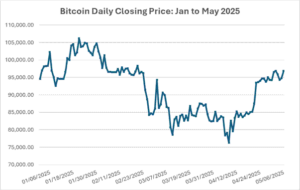Lower Interest Rates Support Gold, but Uncertainty Looms
The World Gold Council (WGC), in its 2025 outlook report, highlights a mixed scenario for the gold market as global interest rates are expected to decline, providing a positive tailwind. However, uncertainties continue to dominate investor sentiment, painting a less clear picture for the new year. According to the report, if current market conditions persist, gold prices are likely to see relatively neutral action.
2024 Recap: Diverse Demand Drives Gold Higher
As 2024 concludes, gold prices have climbed to $2,700 per ounce, marking a nearly 30% gain and the strongest rally in decades. Sentiment around gold has shifted slightly compared to a year ago. At the start of 2024, investors were optimistic about gold’s performance as markets anticipated aggressive rate cuts from the Federal Reserve.
Despite the Fed maintaining a hawkish stance throughout most of the year, strong central bank demand propelled gold to new highs. Additionally, Asian consumer demand provided a solid foundation during the first half of 2024. By the summer, as demand in Asia moderated, Western investors entered the market, offering fresh support as the Federal Reserve began its long-awaited easing cycle.
2025 Outlook: Multiple Factors Influence Gold’s Path
Looking ahead, WGC analysts suggest that the gold market in 2025 will be shaped by a more nuanced set of dynamics. Their models point to modest growth for gold prices based on consensus estimates for GDP growth, yields, and inflation.
The report states, “Gold could see upside from stronger-than-expected central bank demand or deteriorating financial conditions that trigger flight-to-quality flows. However, any reversal in monetary policy with rising interest rates would pose challenges.”
Trade Wars and Inflation Risks
A major risk highlighted in the report is the economic uncertainty tied to President-elect Donald Trump’s proposed tariffs aimed at boosting domestic manufacturing. These policies could ignite a global trade war, posing significant challenges to the gold market.
Higher tariffs could exacerbate already stubborn inflation levels, potentially altering the Federal Reserve’s current policy stance. Markets have already scaled back expectations for rate cuts in 2025. Bank of America anticipates only two rate cuts, while Wells Fargo predicts just one.
“In this context, the Fed’s actions and the direction of the U.S. dollar will remain key drivers for gold. However, as recent years have shown, these are not the only factors influencing gold’s performance. A more comprehensive framework is required to capture the contributions of all aspects of gold demand and supply,” the analysts said.
Asian Consumer Demand and Central Bank Buying
The WGC also emphasizes the importance of Asian consumer demand, which was instrumental in driving gold prices to record highs in 2024. Indian demand surged in the second half of the year following reductions in import duties, while Chinese demand is expected to hinge on economic growth, supported either by natural recovery or government stimulus.
However, gold faces competition from other asset classes such as stocks and real estate, which may divert investor interest in 2025.
Central bank demand remains the largest pillar of support for gold. While the pace of purchases may slow compared to recent years, the WGC expects central bank buying in 2025 to exceed 500 tonnes, the approximate long-term trend, providing a net positive impact on the market.
Conclusion and Outlook
As 2025 approaches, the gold market stands at a crossroads. Lower interest rates and strong central bank demand could bolster prices, but trade wars and inflation risks present potential headwinds. Investors should monitor macroeconomic data, central bank policies, and shifts in Asian consumer demand closely to navigate this complex landscape and make informed trading decisions.





